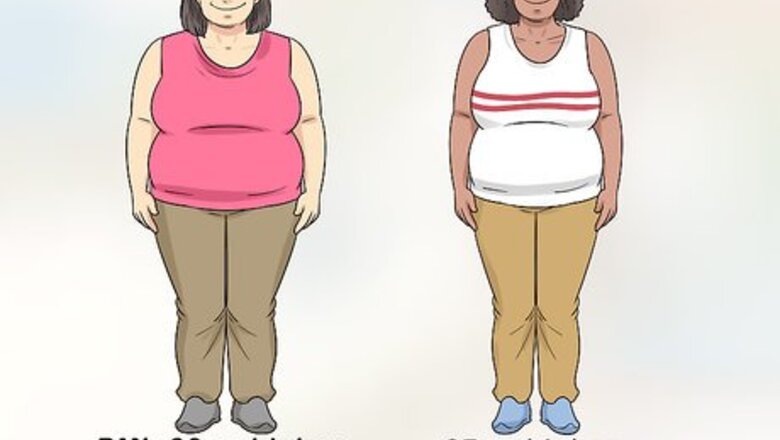
views
X
Research source
However, taking it can cause a range of potentially serious side effects, and stopping the medication suddenly can cause seizures.[2]
X
Research source
If your doctor agrees that you should try Qsymia, you’ll begin a 12-week process of increasing the dosage and evaluating your results. After that, you might possibly step up to higher dosages for 12 more weeks.[3]
X
Research source
Taking Qsymia is as simple as swallowing one pill each morning, but following the dosing protocol and watching for side effects requires your close attention.
Preparation and Planning
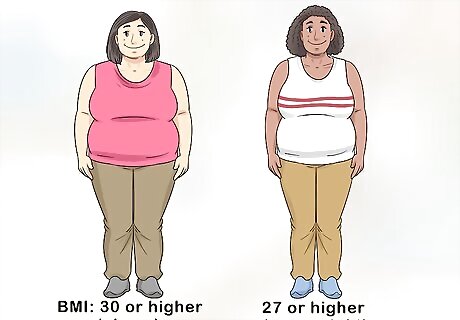
Figure out if you meet the BMI criteria recommended for Qsymia. You and your doctor will make the final determination about whether Qsymia is right for your weight-loss needs. However, the manufacturer recommends its usage based on your body mass index (BMI). If your BMI is 30 or higher (considered obese), Qsymia may be recommended as part of an overall weight loss program, along with exercise and a healthy diet. If your BMI is 27 or higher (considered overweight), Qsymia may be recommended if you also have a weight-related health condition, such as high blood pressure, high cholesterol, or type 2 diabetes.
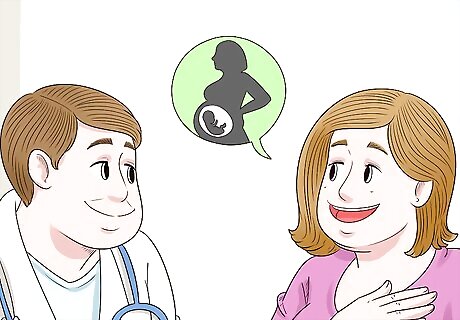
Tell your doctor if you are pregnant or might become pregnant. Qsymia can cause serious birth defects in an unborn child, most notably cleft palate. If it’s possible for you to become pregnant, get a pregnancy test before starting Qsymia and monthly while taking it, and use effective birth control measures consistently while on Qsymia. If you find out you’re pregnant while you’re on Qsymia, stop taking the medication and tell your doctor immediately. You or your doctor should also report the pregnancy to FDA MedWatch at 1-800-FDA-1088 and the Qsymia Pregnancy Surveillance Program at 1-888-998-4887.

Evaluate other reasons you shouldn’t take Qsymia. In addition to pregnancy, you shouldn’t take this medication if you have glaucoma or hyperthyroidism, have taken monoamine oxidase inhibitors (MAOIs) within the past 14 days, or are allergic to phentermine, topiramate, or any of the other ingredients in Qsymia. Discuss your medical history, allergies, and all medications and supplements you currently take (or have recently taken) with your doctor.

Discuss how to taper off Qsymia if necessary. If you need to stop Qsymia because you’ve become pregnant or are experiencing side effects, or because the medication has proven ineffective, don’t quit “cold turkey.” Instead, follow your doctor’s specific guidance for tapering off the medication. You may, for instance, be advised to take Qsymia every other day (instead of daily) for 1-2 weeks before stopping altogether. Tapering significantly reduces your risk of developing seizures or other side effects.
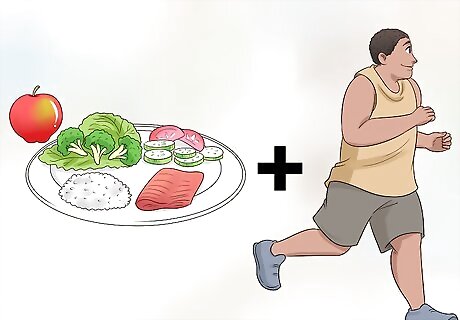
Start a diet and exercise program along with Qsymia. You have a greater likelihood of losing weight with this medication if you combine it with a healthy diet and regular exercise program. Develop a diet and exercise regimen with your doctor that suits your health status and weight loss goals. Since Qsymia can cause side effects like an increased heart rate or decreased perspiration, your doctor may advise slowly easing into an exercise program until you know the medication’s effects on you.
“Starter” and “Recommended” Doses for the First 12 Weeks

Take 1 Starter capsule each morning for 14 days. Swallow the pill whole with a glass of water. You can take it before or after breakfast. The Starter capsule is purple with white print. Its labeled dosage is 3.75 mg/25 mg. If you miss a dose, take it as soon as you remember. However, if it's nearly time for your next dose, just skip the missed one instead of "doubling up." Qsymia is delivered in a delayed-release capsule, so do not crush or chew on it—swallow it whole.
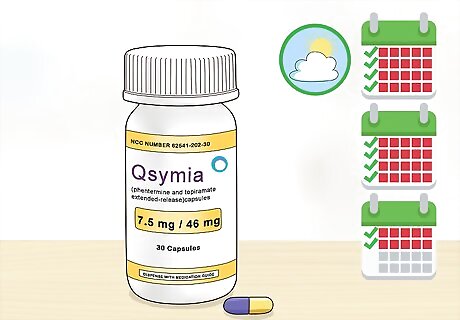
Take 1 Recommended Dose capsule each morning for 10 weeks. After the 2-week Starter period, during which you’ll evaluate how Qsymia affects you, you’ll move up to the Recommended Dose capsule. It looks a bit different, but you’ll take it exactly the same way. This capsule is partially purple with white print, and partially yellow with black print. Its labeled dosage is 7.5 mg/46 mg.
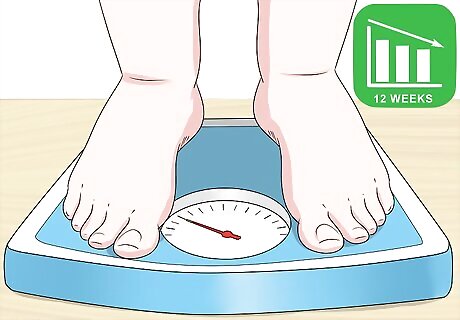
Evaluate your progress with your doctor after 12 weeks. After 3 months of combining daily Qsymia capsules with diet and exercise, the general goal is to have reduced your weight by 3% (from 240 to 233 pounds (109 to 106 kg), for example). Your specific goals will vary, however, depending on your circumstances. If you have achieved your 12-week goal, your doctor will likely advise that you continue on the current 7.5 mg/46 mg dose. If there has been limited or no weight loss after 12 weeks, your doctor will either taper you off the medication over a 1-2 week period, or step up your dosage to the Titration and eventually High Dose levels.
“Titration” and “High” Dose Period
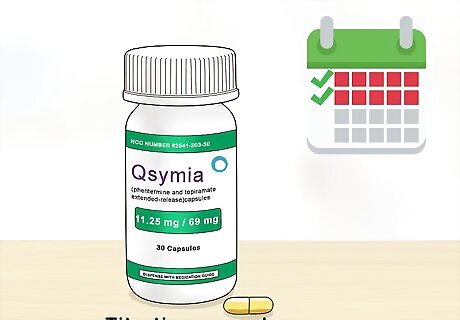
Take a daily Titration capsule for 2 weeks, if recommended. If you have shown limited or no progress on the lower dosages after 3 months, your doctor may transition you to the highest dose over a 2-week period. During these 2 weeks, you’ll take a daily capsule at the Titration dosage level. The Titration capsule is yellow with black print. Its labeled dosage is 11.25 mg/69 mg. As before, you’ll swallow a single pill whole with water once a day, in the morning.
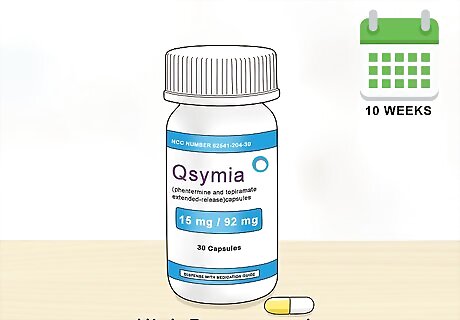
Start each day with a High Dose capsule for 10 weeks. After the 2-week transition on the Titration level, you’ll move up to the High Dose for the remainder of the 3 months. This capsule is partially yellow with black print, and partially white with black print. Its labeled dosage is 15 mg/92 mg.
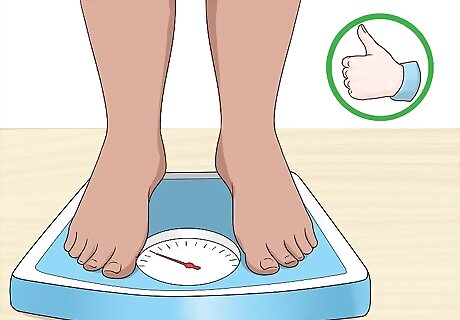
Continue or taper off your dosage, based on your results. If you achieve the desired weight loss results after 12 weeks on the Titration/High dosages, your doctor will likely advise that you continue on the High Dose indefinitely. If you haven’t seen results, you’ll probably be tapered off Qsymia entirely. It’s also possible that your doctor may decrease your dosage but keep you on Qsymia—if the High Dose is proving effective but causing problematic side effects, for instance. If your doctor decides to taper you off the high dose of Qsymia, they will probably recommend that you switch to taking 1 dose every other day for at least a week before stopping altogether. This will reduce your risk of seizures or other serious withdrawal symptoms.
Side Effects

Report serious eye problems right away. Contact your doctor immediately if you experience a sudden decrease in vision, which may or may not be accompanied by eye redness and pain. Qsymia can cause secondary angle closure glaucoma, which is a sudden increase in eye pressure due to a fluid blockage. You shouldn’t take Qsymia if you already have glaucoma.

Don’t wait to report cardiac side effects like a pounding heartbeat. In some patients, Qsymia can cause a rapid and/or irregular heart rate while the person is at rest. You might experience a pounding in your chest during these episodes. Tell your doctor right away if this happens to you. If you have a pre-existing heart condition, it is even more critical that you contact your doctor immediately.
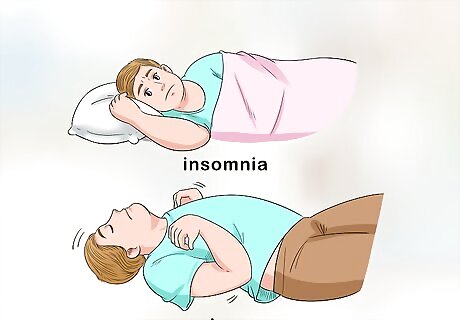
Inform your doctor of major physical, mood/behavioral, or any other side effects. If you experience any of the following while on Qsymia, tell your doctor right away. If the side effects are life-threatening, your doctor may want you to stop taking the medication. Some serious side effects to tell your doctor about right away include: Insomnia Seizures High blood pressure Chest pain Kidney stone symptoms or painful urination Swelling in your legs or feet Irregular heartbeat Rapid breathing Increased body temperature and decreased sweating Concentration, memory, and speech difficulties, such as slurred speech or having a hard time choosing your words Decreased appetite and energy levels Bone pain or broken bones Loss of consciousness Eye pain or changes in your eyes or vision, such as vision loss, blurred vision, or red eyes Vomiting Sudden, unexplained fatigue Decreased alertness Severe headaches Weakness on 1 side of your body New or increased suicidal thoughts New or worse depression or anxiety Feeling agitated, restless, or irritable Panic attacks Acting more aggressive, or being more angry or violent Becoming more reckless (acting on dangerous impulses) An extreme increase in activity or talking (mania) Other major changes in mood or behavior

Prepare for possible adjustments to HBP or diabetes meds. If you currently have high blood pressure (HBP) or type 2 diabetes, you may need to adjust your current medications while on Qsymia. For instance, your blood sugar readings may drop and require a medication adjustment. If you have HBP or type 2 diabetes, talk to your doctor about what to watch for and what adjustments may need to be made while on Qsymia.

Get your doctor’s advice about milder side effects. Some side effects may not be significant enough to require you to stop Qsymia. However, tell your doctor if any of the following occur frequently or become more than a minor annoyance: Numbness or tingling in the hands, arms, feet, or face Dizziness Changes in the way foods taste Trouble sleeping Constipation Dry mouth Metallic taste



















Comments
0 comment